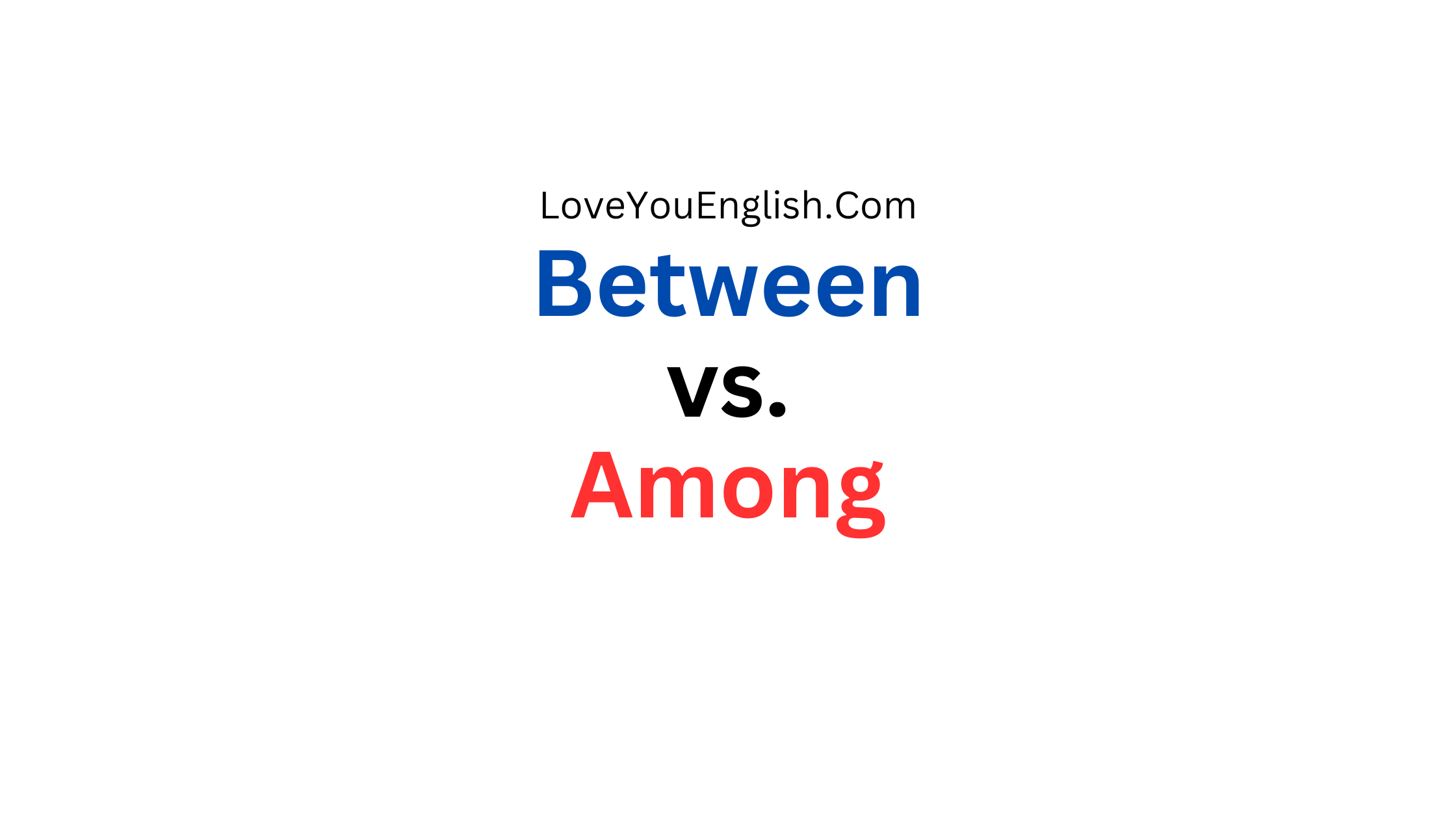Between vs Among: Key Differences with Easy Examples
Between vs among
Language can be hard, especially when it comes to words that seem the same but have different meanings.
“Between” and “among” are two of those words.
They both have to do with how things are placed or spread out, but you can’t use them in the same way.
Knowing the difference between these words can help you talk and write more clearly.
Let’s look at the basics of “between” and “among,” how to use them, and some examples to make it easier to understand.
Understanding “Between”
“Between” is used when referring to two or more distinct, separate items or people.
It’s typically about the relationship or position involving specific entities.
Here are some key points about “between”:
Two Entities: “Between” is most commonly used when talking about two things.
For example:
-
- The cat is sitting between the two dogs.
- She had to choose between the red dress and the blue dress.
Distinct Groups: Even when there are more than two entities, “between” can be used if the entities are distinct and separable.
For instance:
-
- The negotiations between the three companies were successful.
- There is a secret agreement between the managers of different departments.
One-to-One Relationships: “Between” can also imply one-to-one relationships within a group, even if the group consists of more than two members.
For example:
-
- There was a lot of communication between the team members.
- The road runs between the mountains.
Understanding “Among”
“Among” is used when referring to things that are part of a group or mass.
It’s generally used for relationships or positions involving non-distinct entities within a larger group.
Here are some key points about “among”:
More than Two Entities: “Among” is used when talking about more than two things, particularly when they are not seen as distinct.
For example:
-
- She found her friends among the crowd.
- There was a lot of excitement among the children.
Non-Distinct Groups: When referring to a non-specific group where individual members are not singled out, “among” is the correct choice.
For instance:
-
- Happiness is found among those who share.
- The secret was well-kept among the villagers.
Collective Relationships: “Among” often describes a collective relationship within a group.
For example:
-
- There was a consensus among the jury members.
- The responsibilities were shared among the committee.
Key Differences
To summarize, the main difference between “between” and “among” lies in whether the entities involved are seen as distinct or part of a collective group.
Here’s a quick comparison to help clarify:
Between:
-
- Used for two or more distinct items.
- Emphasizes separateness and individual relationships.
- Example: The rivalry between the two schools is intense.
Among:
-
- Used for more than two items, seen as a group.
- Emphasizes collective relationships.
- Example: There is a lot of camaraderie among the team members.
Practical Examples
Let’s look at some practical examples to solidify your understanding of “between” and “among.”
Examples with “Between”:
- The negotiations between the two countries took months.
- She had to choose between studying law or medicine.
- The house is located between the lake and the forest.
- There was a secret deal between the three business partners.
- The competition between the players was fierce.
Examples with “Among”:
- There was a lot of gossip among the neighbors.
- She felt at home among her friends.
- The treasure was hidden among the ruins.
- Harmony prevailed among the members of the choir.
- The responsibility was distributed among the team leaders.
Common Mistakes
People often mix up “between” and “among.”
Here are some common mistakes and how to correct them:
Incorrect: The funds were divided between all the employees.
-
- Correct: The funds were divided among all the employees.
Incorrect: There is a strong bond between the group members.
-
- Correct: There is a strong bond among the group members.
Incorrect: She walked between the flowers in the garden.
-
- Correct: She walked among the flowers in the garden.
Tips to Remember the Difference
Think Distinct vs. Collective: If you’re talking about distinct entities, use “between.” If you’re talking about a collective group, use “among.”
Number of Items: “Between” usually refers to two items, while “among” refers to more than two items.
Context Clues: Use context clues to decide. If the entities can be seen individually, “between” is likely the right choice. If they form a collective group, “among” is probably better.
Practice Exercises
To reinforce your understanding, try these practice exercises:
- Choose the correct word:
- The argument was (between/among) the siblings.
- She felt lost (between/among) the strangers.
- The park is (between/among) the library and the school.
- There is trust (between/among) the members of the group.
- Rewrite the sentences correctly:
- The responsibilities were shared between all the participants.
- There is a lot of competition among the two teams.
- The collaboration between the employees led to success.
Answers to Practice Exercises
- Choose the correct word:
- The argument was between the siblings.
- She felt lost among the strangers.
- The park is between the library and the school.
- There is trust among the members of the group.
- Rewrite the sentences correctly:
- The responsibilities were shared among all the participants.
- There is a lot of competition between the two teams.
- The collaboration among the employees led to success.
Conclusion
Knowing the dissimilarity between “between” and “among” can improve how you communicate.
Keep in mind that “between” is for separate things, while “among” is for groups.
By remembering these dissimilarities and practicing with examples, you can confidently and accurately use these words.
Enjoy learning!
You can always come back to this lesson if you need a reminder.
Keep practicing, and before you know it, using “between” and “among” correctly will be easy.
More cool topics:
- English Dialogues About IPL Matches
- English Dialogues About Diwali
- Spoken English Conversation: Asking For And Giving Directions
- English Dialogues About Concerts
- English Dialogues About Work Stress







